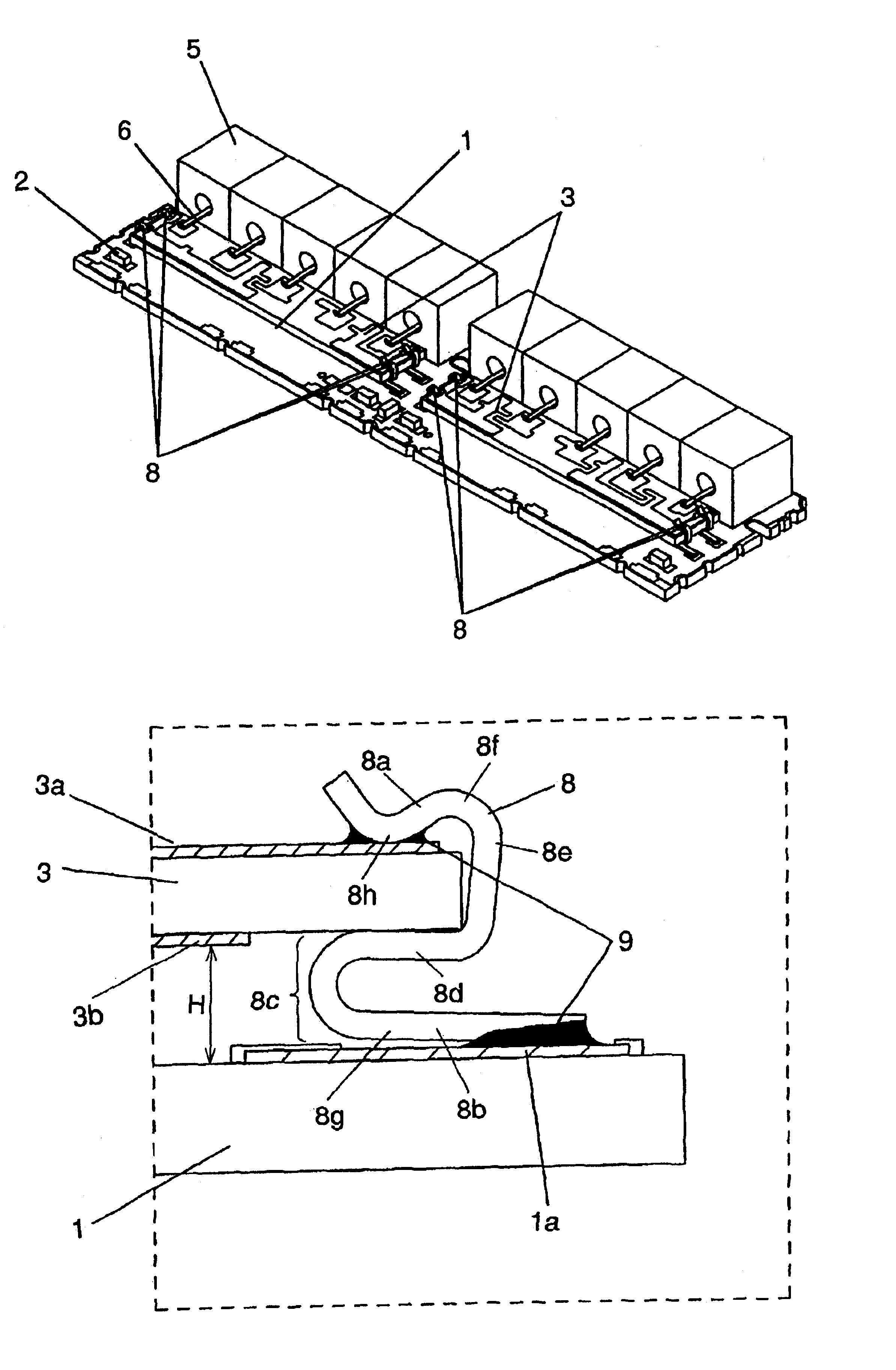Circuit component
a technology of circuit components and components, applied in the field of circuit components, can solve the problems of poor mechanical strength of metal sheets thinner than 0.1 mm, deterioration factor in characteristics, and difficulty in machining
- Summary
- Abstract
- Description
- Claims
- Application Information
AI Technical Summary
Benefits of technology
Problems solved by technology
Method used
Image
Examples
second embodiment
A second exemplary embodiment of the present invention is described with reference to FIG. 8 and FIG. 9.
The difference with the structure of FIG. 3 is that a terminal 8 in the present embodiment has a T-shaped form at the connection section 8b. Or, the end of connection section 8b is branched towards opposite directions, and each end part of the branch makes contact with electrode 1a of the circuit board 1.
It is preferred that respective ends of the branched connection section 8b are provided with a bent section 8i, as shown in FIG. 8. When a terminal 8 is connected to an electrode 1a using a bonding material 9, the bent section 8i helps the bonding material 9 form a fillet along the side face of bent section, preventing it from spreading over the electrode 1a. As a result, the area of bonding material 9 can be limited to be small.
In place of the above-described bent section, a protrusion may be provided at the end of the branched connection section 8b.
Advantage of a terminal of the...
third embodiment
A third exemplary embodiment of the present invention is described with reference to the drawings FIG. 10 and FIG. 11.
Referring to FIG. 10 and FIG. 11, a terminal 8 is provided with one connection section 8a, which is stretching from the joint section 8e, and a pair of opposing sections 8d stretching from the joint section 8e to oppose the connection section 8a. Namely, the terminal 8 in the present embodiment is based on the structure of FIG. 3, and is provided with an increased number of opposing sections 8d, the connection section 8a is being disposed to be locating above the clearance formed by the pair of the opposing sections 8d.
In the configuration of FIG. 3, part of the elastic section 8c is utilized to work also as the opposing section 8d. So, the elastic section 8c has a curved form. On the other hand, the elastic section 8c in the present embodiment is straight-formed, as shown in FIG. 10 and FIG. 11, and the elastic section 8c and the connection section 8b form the appro...
fourth embodiment
A fourth exemplary embodiment of the present invention is described referring to FIG. 13 through FIG. 15.
The terminal 8 in the present embodiment comprises an elastic section 8c disposed between the connection section 8a and the connection section 8b. The present terminal 8 is not designed to hold a coupling board 3. The end portion of the connection section 8a is bent inward towards the connection section 8b so that it does not damage the electrodes and other elements.
In a terminal 8 of the present embodiment, the connection section 8a and the connection section 8b are disposed substantially in parallel to each other, and the elastic section 8c is disposed slant to the connection sections 8a and 8b.
The connection section 8a is attached to an electrode disposed on the reverse-surface of the coupling board 3, while the connection section 8b is attached to the electrode 1a disposed on the circuit board 1. The terminals 8 provides an effective elastic property when they are disposed in...
PUM
 Login to View More
Login to View More Abstract
Description
Claims
Application Information
 Login to View More
Login to View More - R&D
- Intellectual Property
- Life Sciences
- Materials
- Tech Scout
- Unparalleled Data Quality
- Higher Quality Content
- 60% Fewer Hallucinations
Browse by: Latest US Patents, China's latest patents, Technical Efficacy Thesaurus, Application Domain, Technology Topic, Popular Technical Reports.
© 2025 PatSnap. All rights reserved.Legal|Privacy policy|Modern Slavery Act Transparency Statement|Sitemap|About US| Contact US: help@patsnap.com



